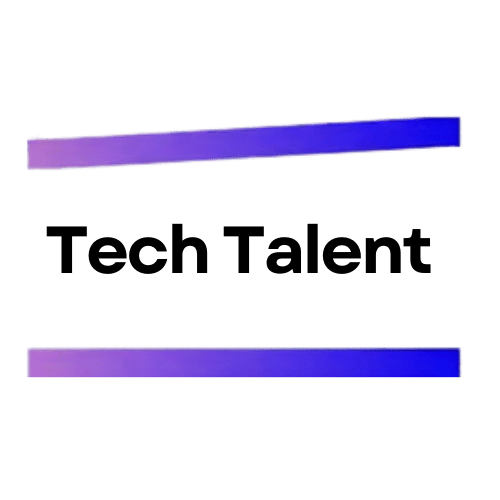In today’s fast-paced business environment, HR metrics and analytics have become indispensable tools for organizations seeking to make informed, data-driven decisions. Gone are the days when HR managers and small business owners relied solely on qualitative information and intuition to address complex organizational issues. The advent of large-scale computer-driven HR metrics and analytics has ushered in a new era of decision-making that is revolutionizing the way businesses operate and thrive.
HR metrics and analytics provide objective, quantitative insights into various aspects of human resources management, enabling organizations to measure and evaluate key factors such as:
- Employee performance
- Engagement levels
- Retention rates
- Workforce diversity
By leveraging these powerful tools, businesses can identify trends, implement effective strategies, and optimize their human capital to drive overall success. The transformative power of HR metrics and analytics lies in their ability to provide a comprehensive and nuanced understanding of an organization’s workforce, allowing for more precise and effective decision-making.
Essential HR Metrics for Data-Driven Decision Making
To harness the full potential of HR metrics and analytics, businesses must focus on key performance indicators that provide actionable insights. Some of the most crucial metrics for data-driven decision-making include:
- Employee Turnover Rate: This metric measures the rate at which employees leave an organization, either voluntarily or involuntarily. By analyzing turnover data, HR professionals can identify underlying trends and factors contributing to employee attrition, enabling them to develop targeted strategies for improving retention.
- Time-to-Hire: This metric tracks the duration from posting a job opening to successfully onboarding a new employee. HR analytics can help pinpoint bottlenecks in the recruitment process, allowing organizations to streamline their hiring procedures and reduce time-to-hire.
- Absenteeism: By monitoring employee absences, organizations can identify patterns and trends that may indicate underlying issues affecting workforce productivity and engagement. HR analytics can help develop proactive strategies to address absenteeism and improve overall attendance rates.
- Employee Satisfaction: This metric is crucial for gauging overall workforce contentment and engagement. Through surveys and feedback analysis, HR analytics can provide valuable insights into factors influencing employee satisfaction, enabling organizations to implement targeted interventions to boost morale and productivity.
By focusing on these essential metrics, businesses can gain a deeper understanding of their workforce dynamics and make data-driven decisions that positively impact their bottom line.
Effective Data Collection Methods for HR Analytics
To leverage the power of HR metrics and analytics, organizations must employ robust data collection methods that ensure accuracy and comprehensiveness. Some of the most effective approaches include:
- Surveys: Well-designed surveys can gather both quantitative and qualitative data directly from employees, providing valuable insights into their perceptions, experiences, and preferences. To maximize the effectiveness of surveys, organizations should:
- Use a mix of closed-ended and open-ended questions
- Ensure anonymity to encourage honest responses
- Conduct surveys regularly to track changes over time
- Performance Reviews: Structured evaluations of employee performance offer valuable data on individual and team contributions. To enhance the effectiveness of performance reviews, organizations should:
- Implement a standardized review process
- Use objective criteria for evaluations
- Incorporate 360-degree feedback for a more comprehensive assessment
- HR Information Systems (HRIS): These centralized platforms automate the storage and management of employee data, offering a comprehensive and accessible source of HR information. To maximize the benefits of HRIS, organizations should:
- Ensure data accuracy and completeness
- Regularly update and maintain the system
- Integrate HRIS with other business systems for seamless data flow
By employing these data collection methods, organizations can build a robust foundation for HR analytics, enabling them to derive meaningful insights and make informed decisions.
Leveraging HR Analytics for Strategic Decision Making
HR analytics has the potential to transform strategic decision-making across various aspects of human resources management. By harnessing the power of data-driven insights, organizations can align their HR strategies with broader business objectives and optimize talent management practices. Some key areas where HR analytics can inform strategic decision-making include:
- Recruitment: HR analytics can revolutionize the hiring process by:
- Analyzing historical hiring data to identify successful candidate profiles
- Predicting future talent needs based on business growth projections
- Optimizing job descriptions and recruitment channels for better candidate attraction
- Training and Development: Data-driven insights can enhance employee development initiatives by:
- Identifying skill gaps within the organization
- Evaluating the effectiveness of training programs
- Personalizing learning paths for individual employees
- Talent Management: HR analytics can improve talent retention and succession planning by:
- Identifying high-potential employees for leadership roles
- Predicting flight risks and implementing targeted retention strategies
- Analyzing career progression patterns to optimize talent development
- Performance Management: Data-driven performance management can lead to improved outcomes by:
- Identifying key performance indicators that align with business goals
- Providing real-time feedback and coaching based on performance data
- Implementing fair and objective performance evaluation systems
By leveraging HR analytics in these strategic areas, organizations can make more informed decisions that drive business success and foster a high-performing workforce.
Real-World Examples of HR Analytics in Action
The transformative power of HR analytics is evident in the success stories of various organizations that have embraced data-driven decision-making. Here are some compelling examples of HR analytics in action:
- Blueboard: This employee rewards and recognition company has leveraged HR analytics to:
- Measure employee engagement and satisfaction levels
- Identify areas for improvement in their rewards programs
- Tailor recognition initiatives to drive better business results
- Databox: This software company has implemented HR analytics to:
- Track employee productivity and performance metrics
- Identify top performers and optimize team structures
- Allocate resources effectively to drive improved business outcomes
- Wave Financial: This Canadian financial software company has utilized HR analytics to:
- Analyze employee data for security and productivity trends
- Improve fraud prevention measures
- Optimize resource allocation and training initiatives
These real-world examples demonstrate the tangible benefits of implementing HR analytics in various business contexts. By embracing data-driven decision-making, organizations can unlock new levels of efficiency, productivity, and overall success.
Conclusion: Embracing the Future of HR with Data-Driven Decision Making
As we’ve explored throughout this article, HR metrics and analytics have become indispensable tools for organizations seeking to make informed, data-driven decisions. By leveraging these powerful resources, businesses can gain a deeper understanding of their workforce dynamics, optimize their human capital, and drive overall success.
The benefits of embracing HR analytics are manifold:
- Enhanced recruitment and retention strategies
- Improved employee engagement and satisfaction
- Optimized training and development initiatives
- More effective performance management systems
- Better alignment of HR strategies with business objectives
As we move further into the era of big data and advanced analytics, organizations that fail to embrace these tools risk falling behind their more data-savvy competitors. By investing in HR analytics capabilities and fostering a culture of data-driven decision-making, businesses can position themselves for long-term success in an increasingly competitive landscape.
The future of HR lies in harnessing the power of data to drive strategic decisions and create thriving, high-performing workforces. By embracing HR metrics and analytics, organizations can unlock new levels of efficiency, productivity, and overall success, ensuring they remain at the forefront of their industries for years to come.

Explore TechTalent: Elevate Your Tech Career
Certify Skills, Connect Globally
TechTalent certifies your technical skills, making them recognized and valuable worldwide.
Boost Your Career Progression
Join our certified talent pool to attract top startups and corporations looking for skilled tech professionals.
Participate in Impactful Hackathons
Engage in hackathons that tackle real-world challenges and enhance your coding expertise.
Access High-Demand Tech Roles
Use TechTalent to connect with lucrative tech positions and unlock new career opportunities.
Visit TechTalent Now!
Explore how TechTalent can certify your skills and advance your tech career!
